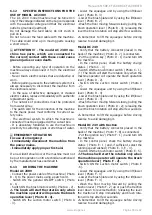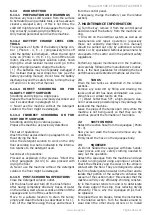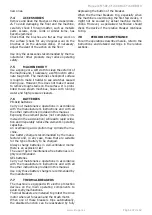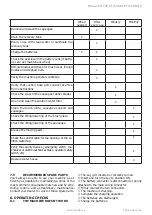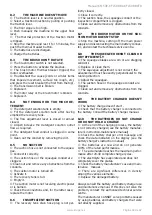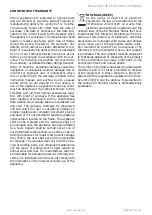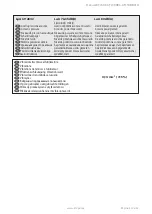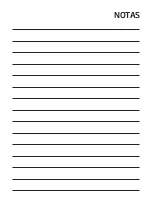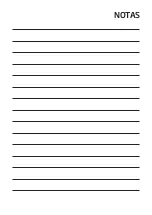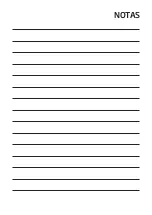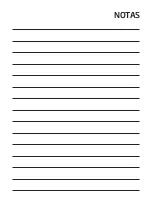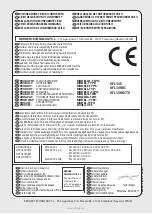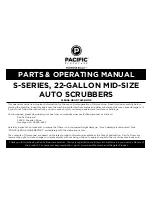
battery charger ( Photo L - 2 ) and to the mains
power.
On switching on the battery charger will check the
battery voltage and decide whether to start the
charging process. If the battery is not connected
to the battery charger, the red LED will flash. If the
result of the test is positive after 1 second the char-
ging of the battery can start, with the red LED on.
The progress of the charging process is shown by
three LED’s: red, yellow and green, as in the whole
range of the battery chargers.
The green LED shows the end of the charging or
the last phase in case of deep charging process; in
the former case, the relay is opened to disconnect
galvanically the battery from the battery charger.
•
For further information refer to the use and sa-
fety manual of the battery charger provided by the
manufacturer.
If the machine is equipped with Pb-Acid batteries,
charge only in a well-ventilated area, lift the supe-
rior cover and open the battery plugs.
•
Follow the steps indicated in the battery ma-
nufacturer’s operating and safety manual (see the
battery maintenance section).
If the machine is equipped with GEL batteries
(maintenance free), follow the instructions indica-
ted here below.
If the machine is used regularly:
Always keep the batteries connected to the battery
charger when the machine is not being used.
If the machine is not used for extended time pe-
riods:
Charge the battery during the night after the last
work period, and then disconnect the battery from
the battery charger.
Charge the battery during the night before using
the machine again.
Intermediate or incomplete charging while working
should be avoided.
If the machine is equipped with Pb-Acid batteries,
use a hydrometer to check the element liquid in-
tensity on a regular basis: if one or more elements
are discharged and the others fully charged, the
battery has been damaged and should be replaced
or repaired (refer to the battery service manual).
Close the element plugs and lower the superior
cover.
6.4
SQUEEGEE ASSEMBLY
Slightly screw the two knobs ( Photo M - 6 ) into
the squeegee body and insert the squeegee into
the slots situated on the squeegee support.
Screw the two knobs ( Photo M - 6 ) in order to
secure the squeegee to the support.
Firmly insert the suction hose ( Photo M - 3 ) into
the pipe in the squeegee body.
6.5
SQUEEGEE DISASSEMBLY
Disconnect the suction hose from the squeegee
body.
Unscrew the two knobs ( Photo M - 6 ) that secure
the squeegee to its support and pull the squeegee
to free it.
6.6
SQUEEGEE BLADES DISASSEMBLY
/ ASSEMBLY
Disassemble the squeegee from its support (see
6.5)
Unscrew the knobs ( Photo M - 4, Photo M - 6
) placed on the squeegee body and apply some
pressure on their bolts in order to push out the
plastic support of the squeegee blades from the
squeegee body.
Tear off the rubber blades from the plastic support.
Assemble the new blades on the plastic support by
the means of the plastic pins that have to be fixed
in the holes placed the blades.
Push the plastic support of the squeegee blades
into the squeegee body and screw the knobs
( Photo M - 4, Photo M - 6 ) to secure it to the
squeegee body.
Reassemble the squeegee to its support (see 6.4).
6.7
SQUEEGEE ADJUSTMENT
The knob screw on the squeegee support ( Photo
M - 7) adjusts the squeegee’s inclination with re-
spect to the floor. The two red knobs on the sides,
connected to the rear wheels of the squeegee (
Photo M - 2 ) are to adjust the pressure of the
squeegee to the floor.
When the squeegee is perfectly adjusted, the rear
squeegee blade, sliding as it moves, bends in all
points forming an angle of 45° with the floor.
As the machine operates (advances), the knobs (
Photo M - 2, Photo M - 7 ) can be used to adjust
the inclination and pressure of the squeegee blades
on the floor.
Squeegee drying must be uniform along the entire
drying line: damp patches mean that drying is in-
sufficient; turn the adjustment knobs to optimize
drying.
6.8
SPLASH GUARD ASSEMBLY/ DI-
SASSEMBLY
The splash guard is attached to the brush plate by
interlocking on the plastic cover.
To remove the splash guard is sufficient to pull it
down until it detaches from the plastic cover.
To replace the splash guard,push it into the bottom
edge of the plastic cover from one end and con-
tinue pushing up to the other end.
6.9
BRUSH ASSEMBLY / DISASSEMBLY
•
Never use the machine if the brush or the pad
holder with abrasive pad is not perfectly installed.
Assembly:
Make sure that the brush plate is raised; otherwise
www.kruger.es
Página 33 de 42
Manual KFL50E-KFL50BBC-KFL50BBCTR
Summary of Contents for KFL50BBC
Page 1: ...MANUAL FREGADORA HOMBRE A PIE KFL50E KFL50BBC KFL50BBCTR...
Page 6: ...H G 1 2 1 3 2 I www kruger es P gina 5 de 42 Manual KFL50E KFL50BBC KFL50BBCTR...
Page 7: ...1 2 L M 1 1 4 4 3 2 5 7 6 5 2 6 www kruger es P gina 6 de 42 Manual KFL50E KFL50BBC KFL50BBCTR...
Page 8: ...N O 1 1 2 3 3 2 4 www kruger es P gina 7 de 42 Manual KFL50E KFL50BBC KFL50BBCTR...
Page 9: ...P 1 www kruger es P gina 8 de 42 Manual KFL50E KFL50BBC KFL50BBCTR...
Page 43: ...NOTAS...
Page 44: ...NOTAS...
Page 45: ...NOTAS...
Page 46: ...NOTAS...

















